Chapter 6: Nucleotides, Nucleic Acids, and Genetic Information; Biochemistry
1/42
There's no tags or description
Looks like no tags are added yet.
Name | Mastery | Learn | Test | Matching | Spaced |
|---|
No study sessions yet.
43 Terms
Learning Outcomes 6.1
Describe the structures of nucleotides and polynucleotides
Recognize the constituent components of nucleotides
Draw the structures of the nucleobases, ribonucleosides, and deoxyribonucelosides
Distinguish the deoxyribonucleosides that comprise DNA from the ribonuceleotides that comprise RNA
Identify the phosphodiester bonds that link nucleotide residues in DNA and RNA
Key Concepts 6.1: Nucleotides and Polynucleotides
Nucelotides consist of a purine or pyrimidine base linked to ribose to which at least one phosphate group is attached
Polynucleotides are chains of nucleotides linked by phosphodiester bonds between 5’- and 3’ hydroxyl groups
RNA is made of ribonucleotides; DNA is made of deoxynucleotides (which contain 2’-deoxyribose)
Nucleobases
derivatives of purine and pyrimidine
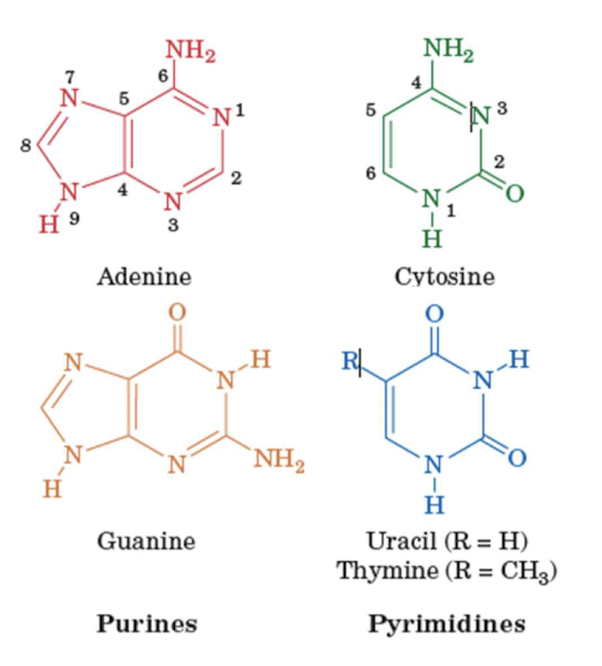
Ribonucleosides
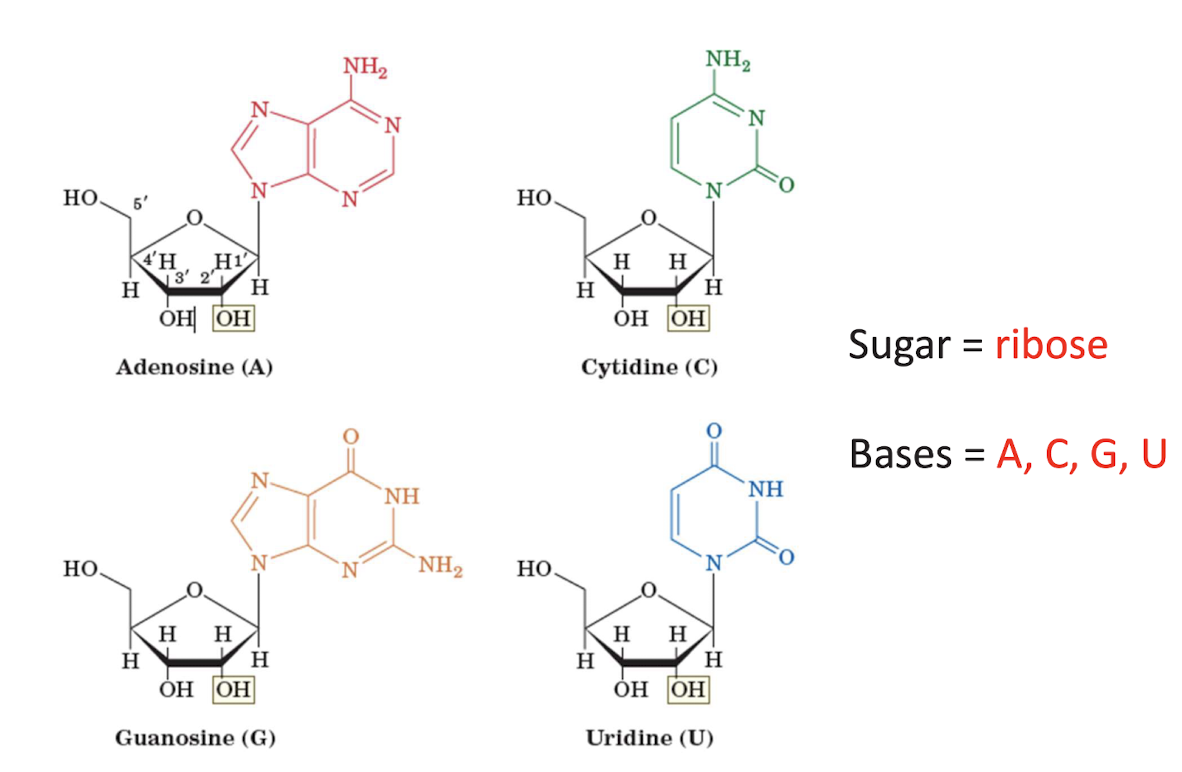
2’-deoxyribonucleosides
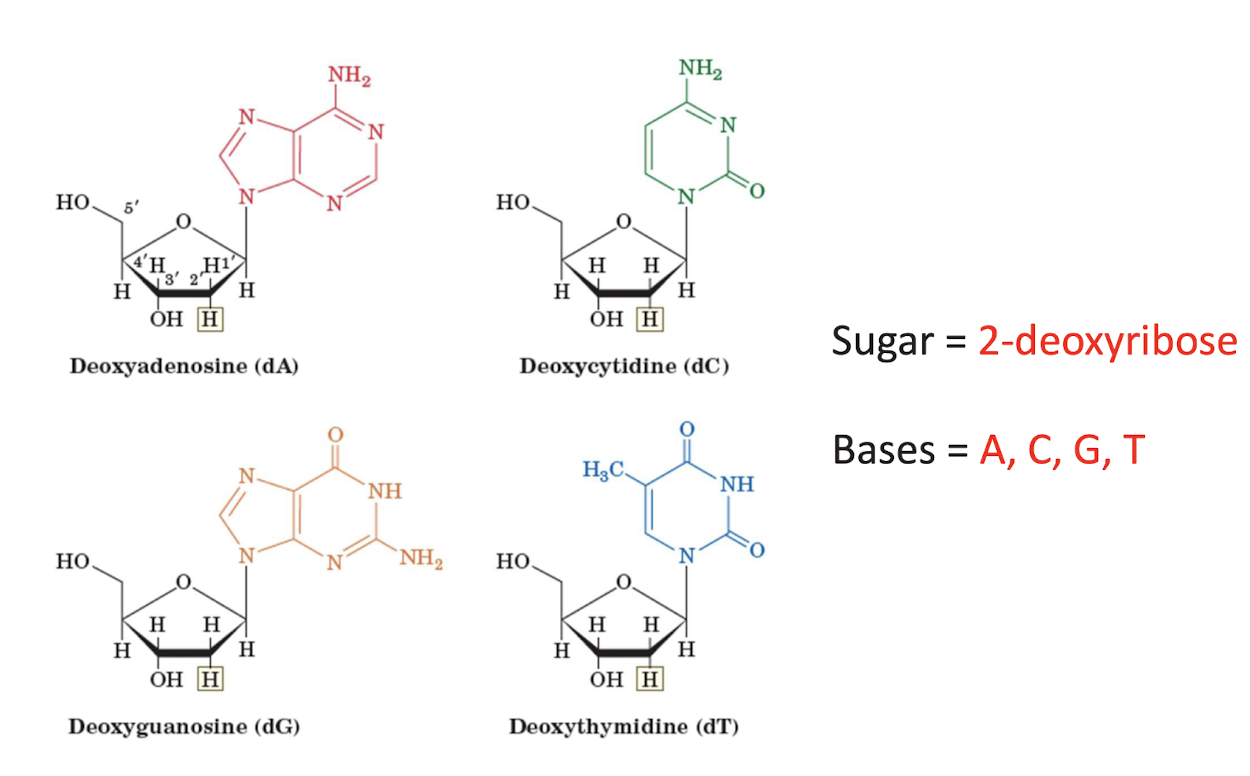
Nucleotide Chemical Structures
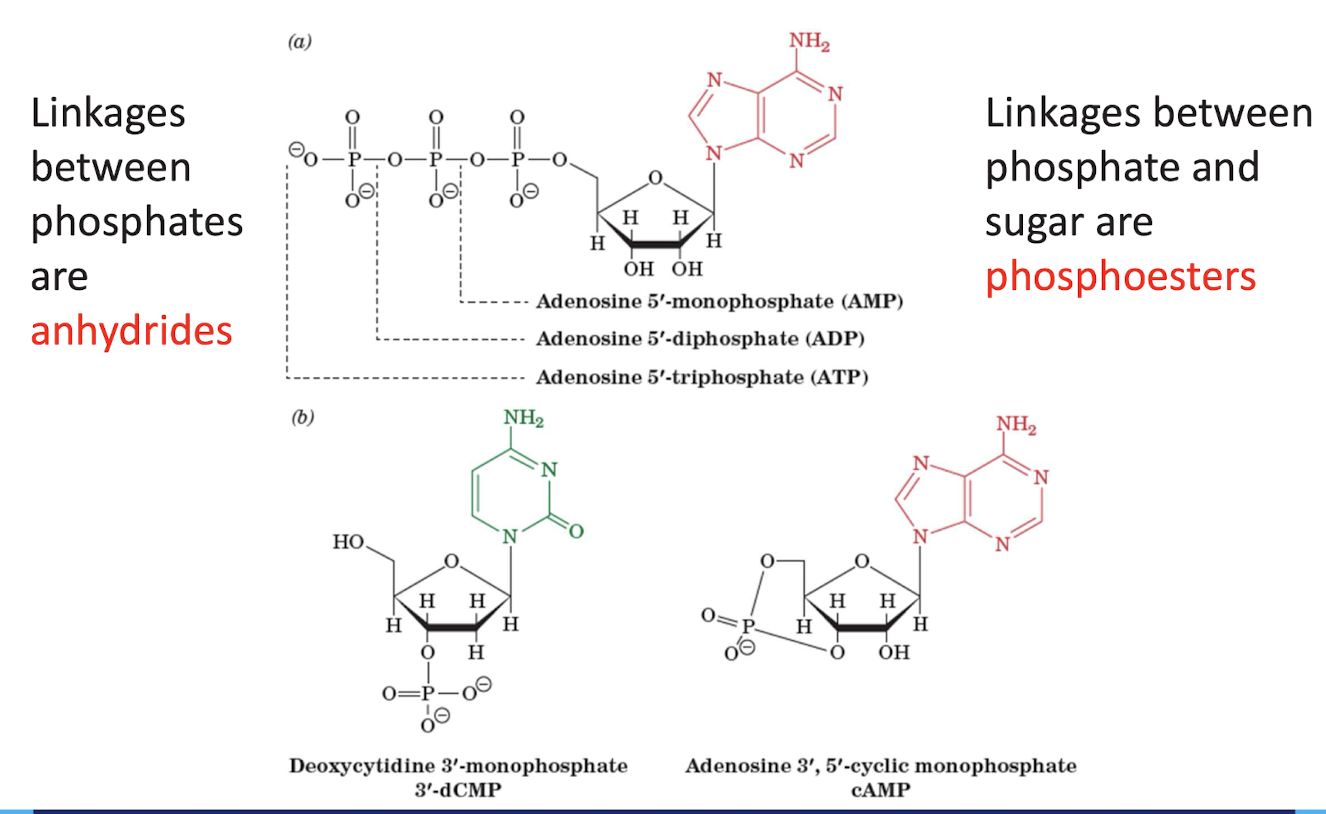
Nucleic Acids are Nucleotide Chains
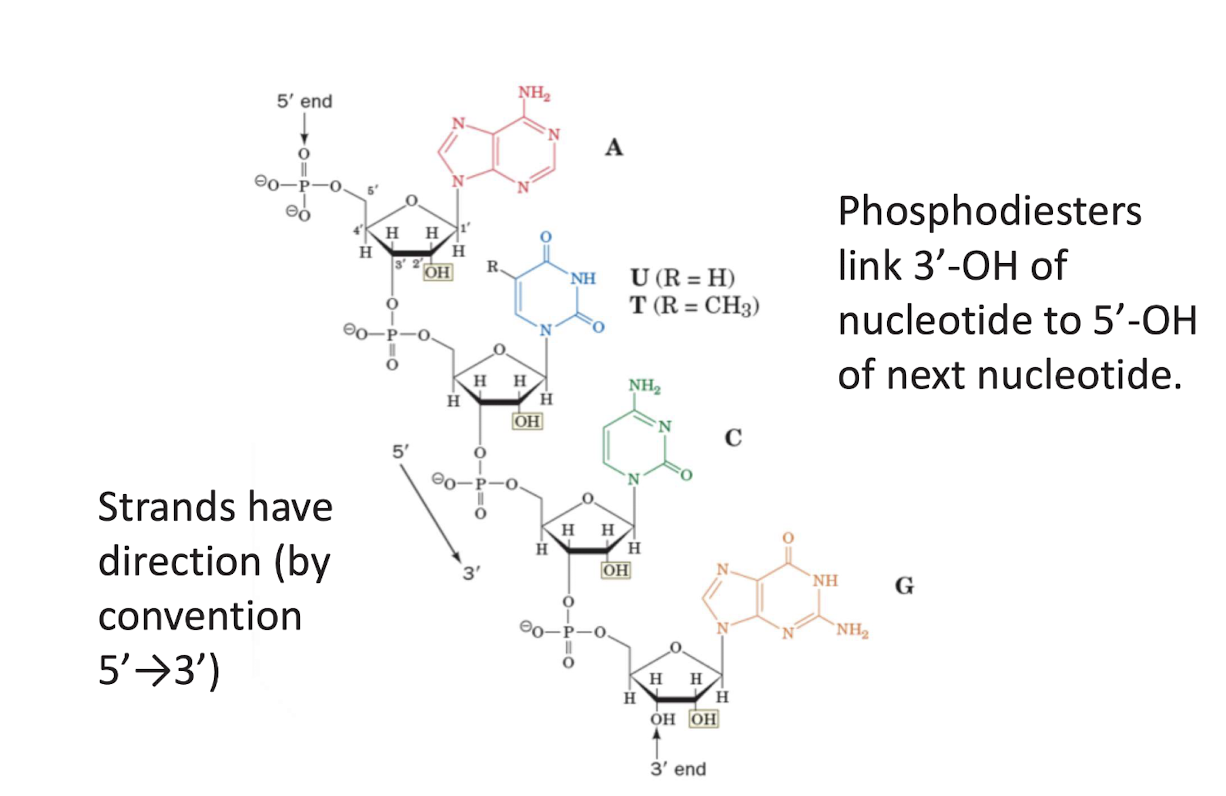
Checkpoint 6.1: Nucleotides and Polynucleotides
What are the purines and pyrimidines commonly found in nucleic acids?
Practice drawing the structures of adenine, adenosine, and adenosine 5’-monophosphate.
What are the chemmical differences between a ribonucleoside triphosphate and a deoxyribonucleoside monophosphate?
Using Figs. 6.4 and 6.6 as a guide, draw the complete structure of a nucleoside triphosphate before and after it becomes incorporated into a polynucleotide chain. Then draw the structures that would result if the newly formed phosphodiester bond were hydrolyzed.
Learning Outcomes: 6.2
Explain how DNA strands assemble and fold into regular structures
Explain the arrangement of the two polynucleotide strands of DNA double helix
Construct hydrogen bond-medicated pairs between complementary nucleotides
Analyze how hydrogen bonding, stacking, and ionic interactions contribute to the stability of the double-stranded structure of DNA
Describe how a double helical secondary DNA structure is denatured by heating and renatured through annealing
Identify the different secondary structures of DNA
Characterize the effects of supercoiling on the structures of DNA
Compare the mechanisms of topoisomerases in adding and removing supercoils
Key Concepts 6.2: Nucleic Acid Structure: DNA
In DNA, two antiparallel chains of nucleotides linked by phosphodiester bonds form a double helix
Bases in opposite strands pair: A with T and G with C
Base stacking and hydrogen bonding contribute to the stability and specificity of base-paired helical structures
Under- and Over- wound DNAs form twisted tertiary structures called supercoild
The biologically active form of DNA is supercoiled; enzymes called topoisomerases modify the superhelical stress of the DNA
Watson-Crick Double- Helical Model of DNA
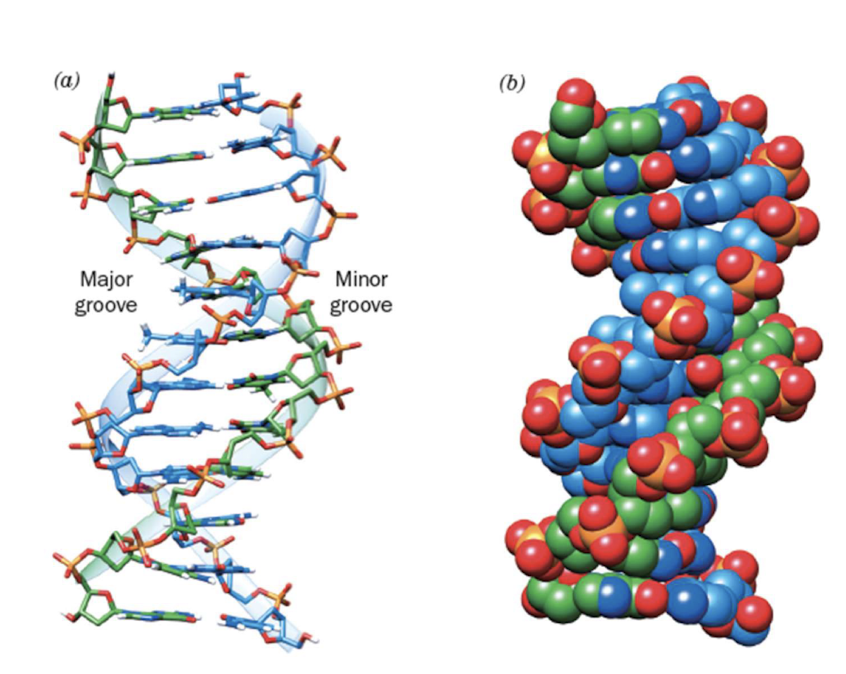
DNA Complementary Base Pairing
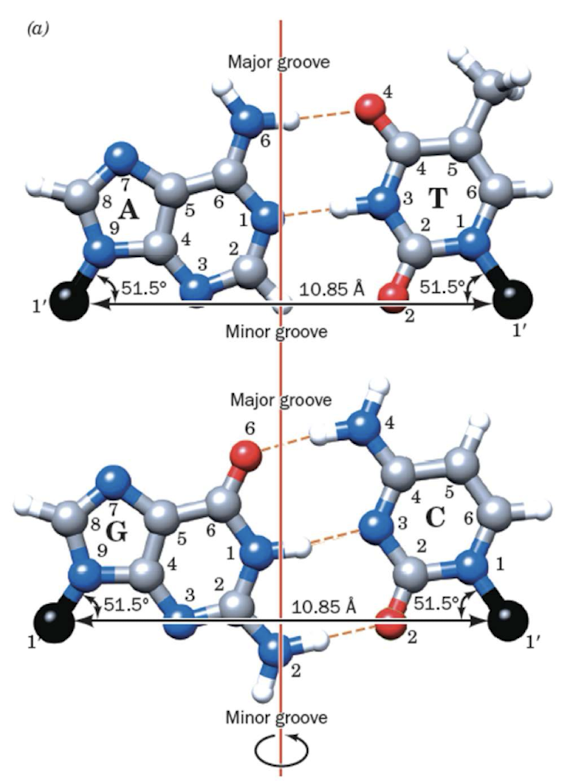
Tautomeric Forms of Guanine
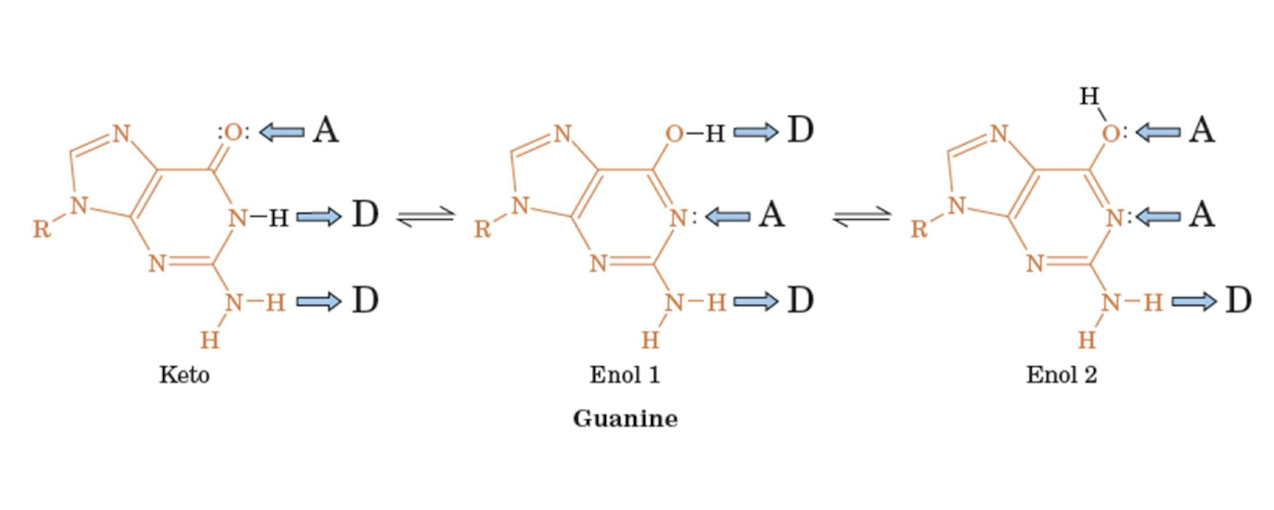
Tautomeric Forms of Thymine
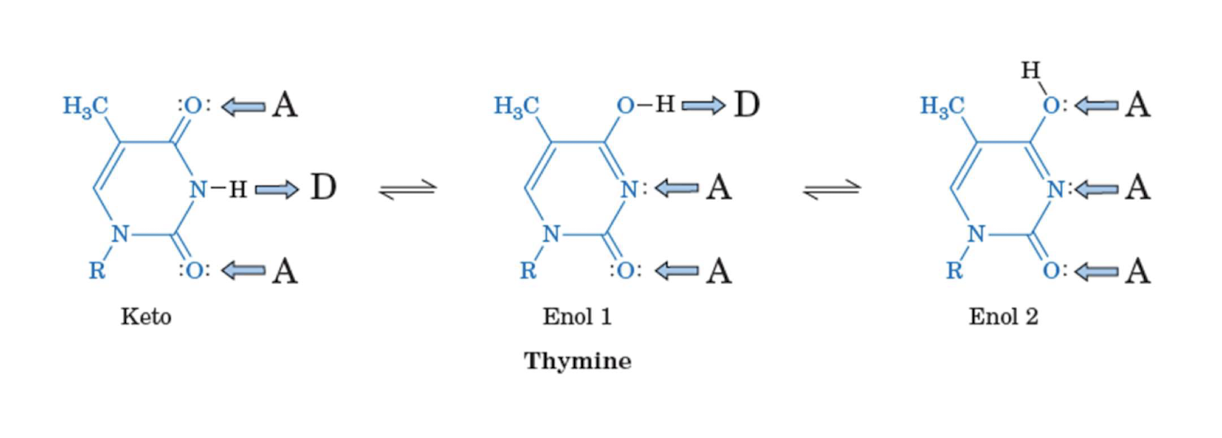
G and T Wobble Base Pair
G-T cannot pair when positioned as other base pairs but can pair if T “slides up” wobbles
The result is that DNA base pairs are very homogeneous
RNA base pairs are more structurally diverse
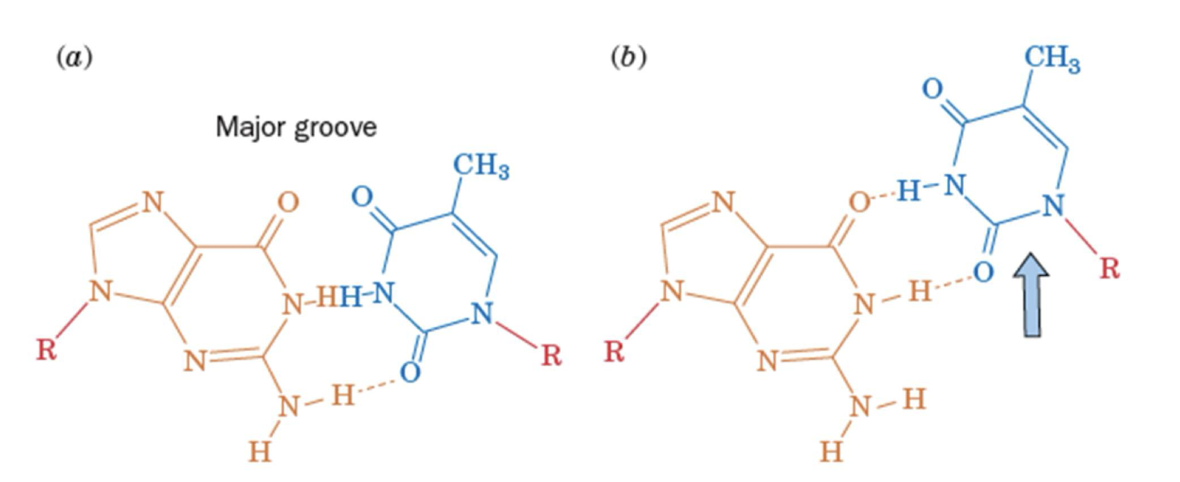
Stacks in crystallized nucleic acids bases
hydrogen bonds in base pair only replace hydrogen bonds to water. Main stabilization of helix comes from base stacking.
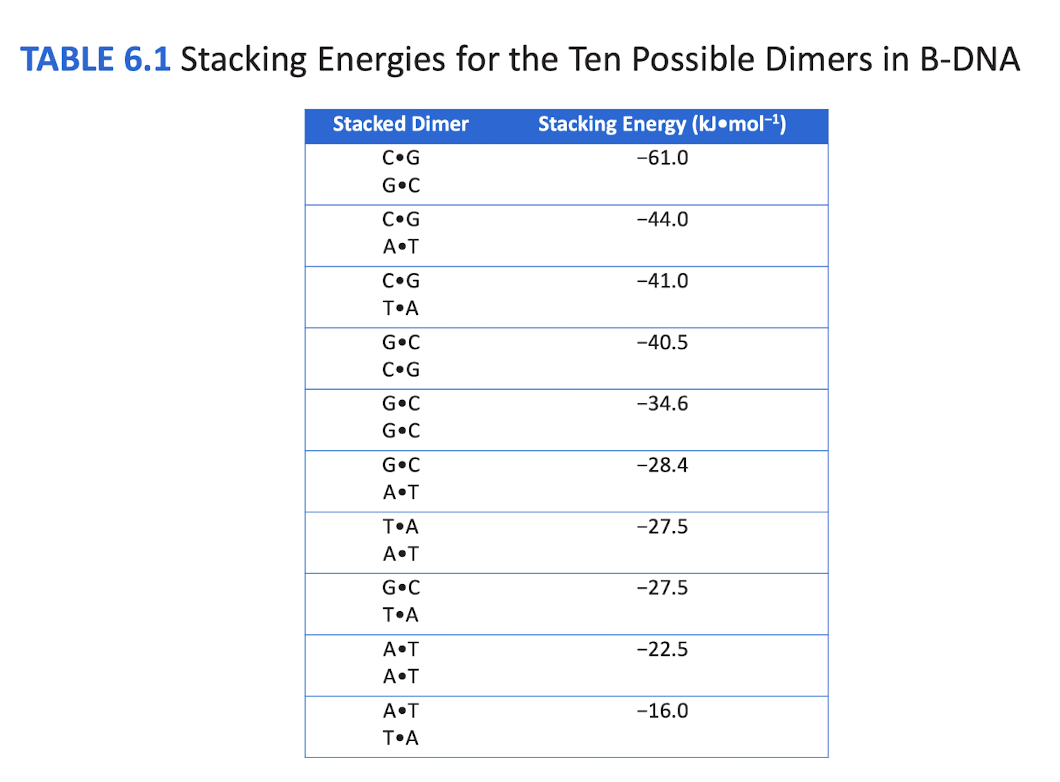
DNA denaturation and melting curve
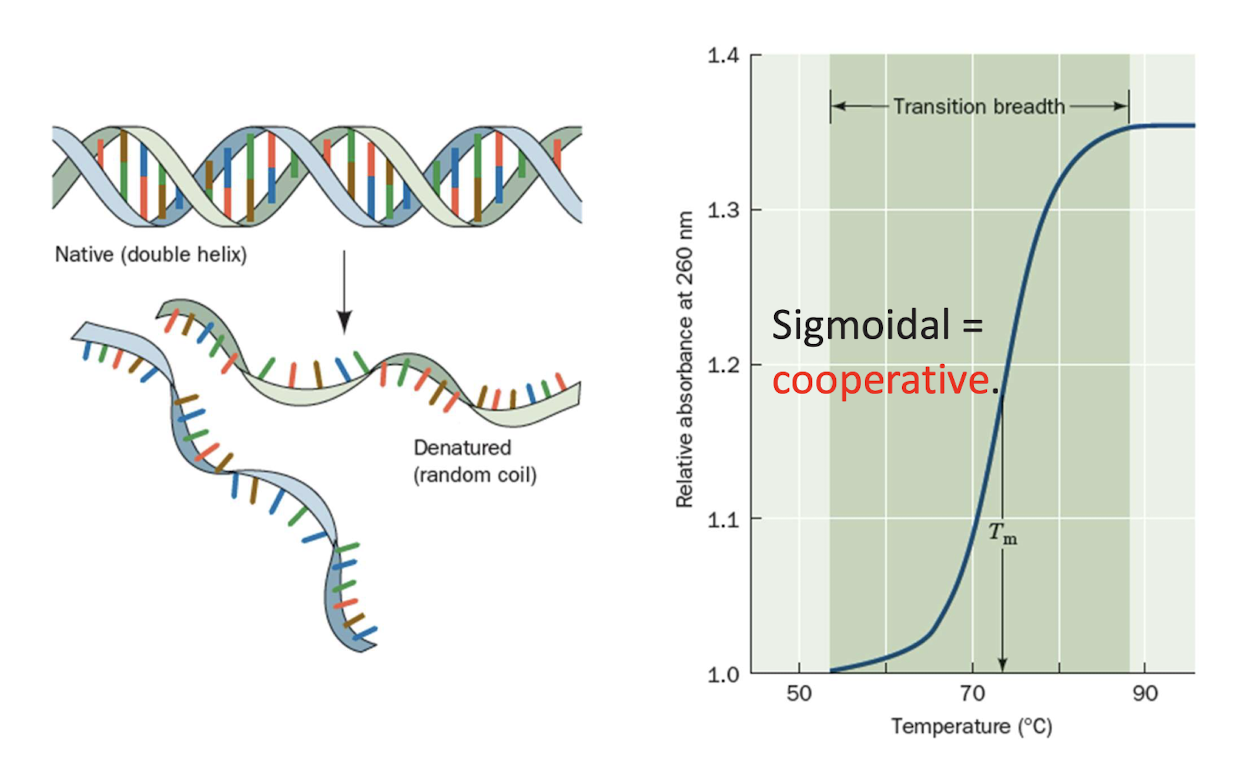
Nucleotide Unit Conformation
More bonds can rotate than in polypeptide, but ring limits rotations (especially δ)
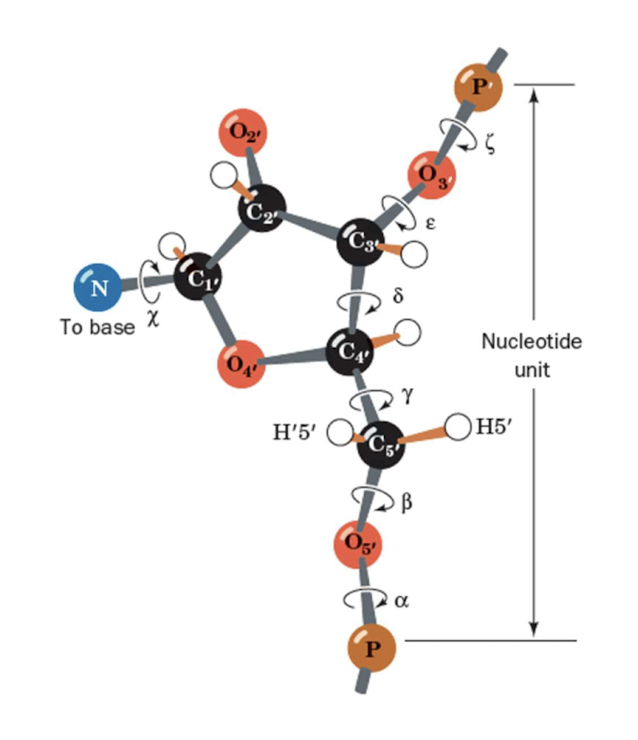
Nucleotide Sugar Conformations
Two main sugar conformations:
C3’-endo (A-form)
C2’-endo (B-form)
Distance between phosphates is main difference of two conformations
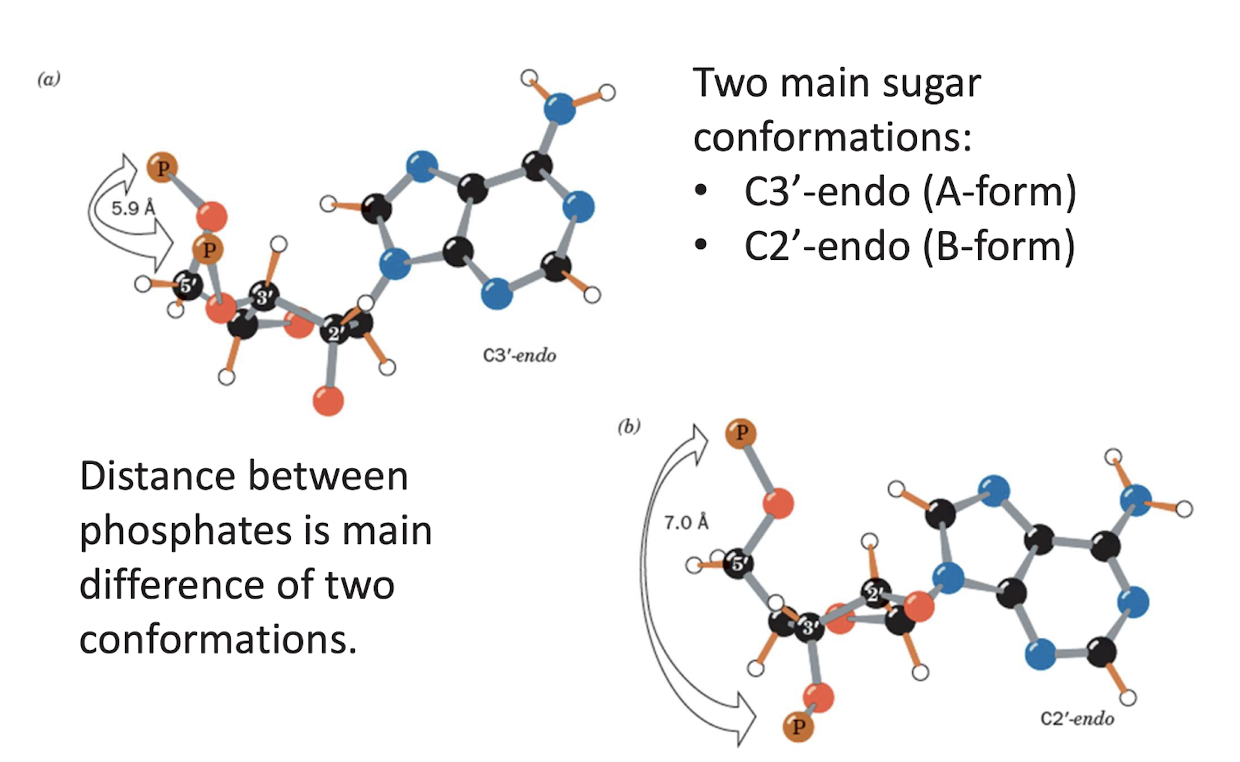
Sterically Permissible Base Residue Orientations
Two preferred base orientations result from rotation around bound χ: anti and syn
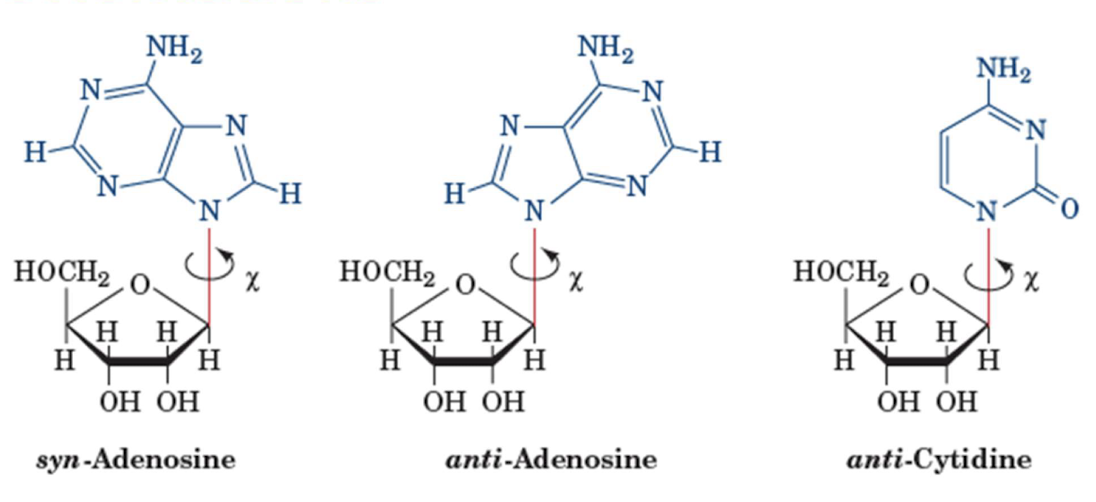
Structural Features of DNA
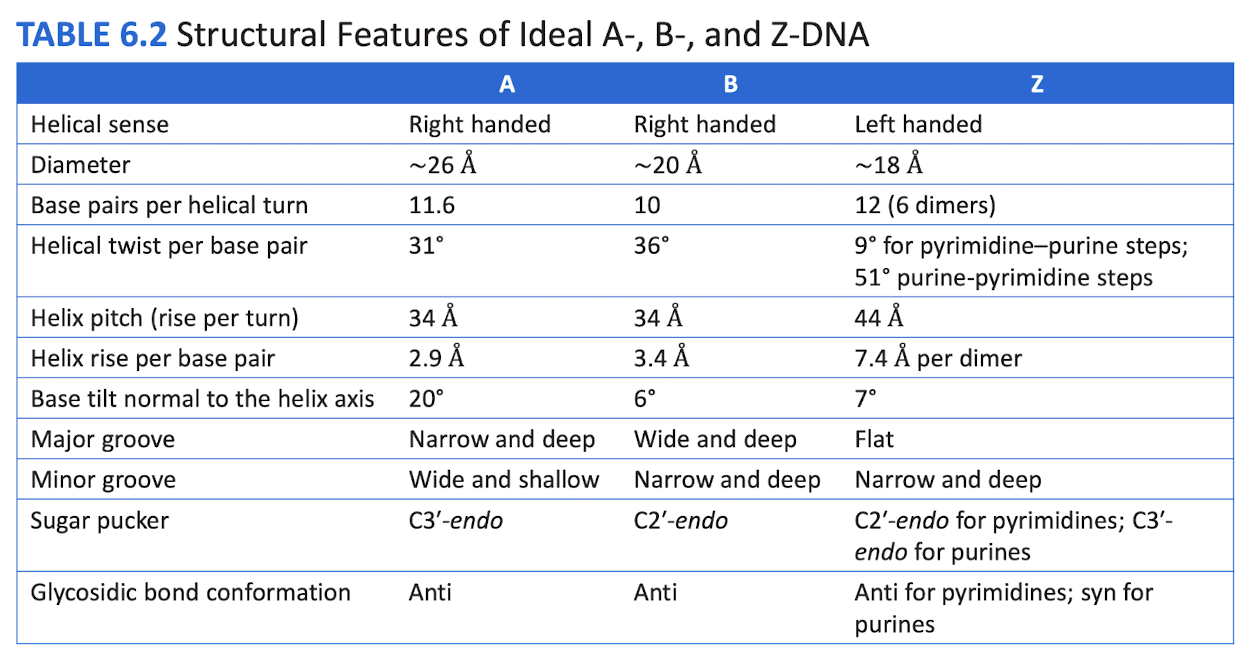
DNA Geometries: A-DNA
Base pairs displaced from right-handed helical axis.
Base pairs tilted 20˚ from perpendicular axis
Wider helix
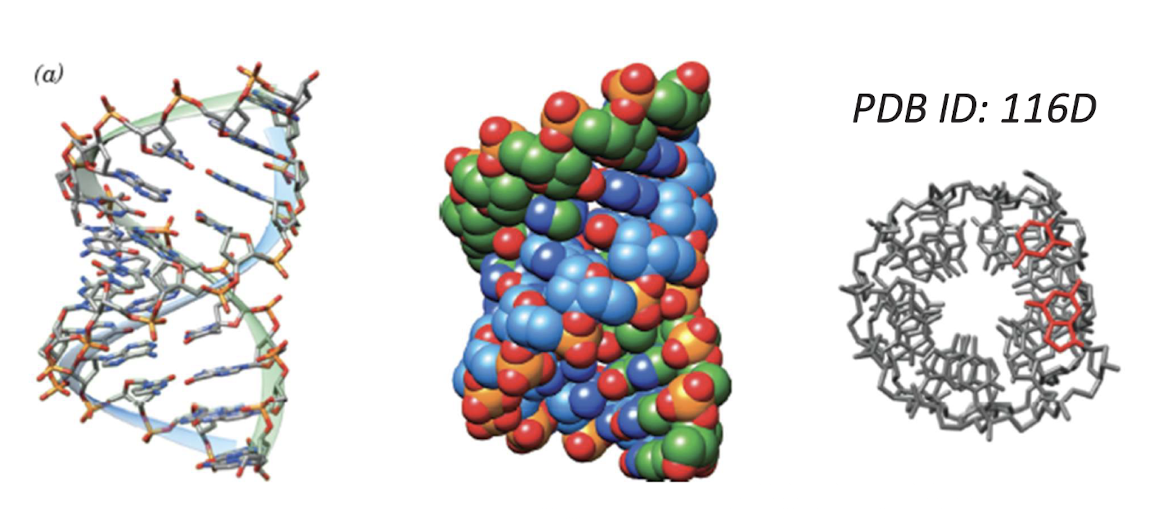
DNA Geometries: B-DNA
Right-handed helical axis through base pairs.
Base pairs nearly perpendicular to axis
Narrower helix
prominent major and minor grooves
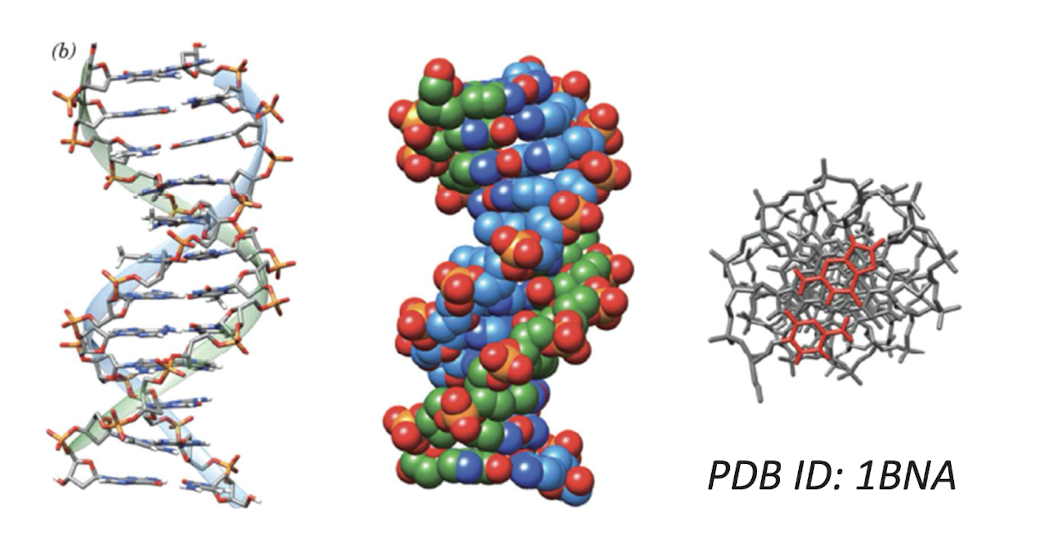
DNA Geometries: Z-DNA
Left-handed helical axis through base pairs
Base pairs nearly perpendicular to axis
Narrow helix with deep minor groove
Favored by altering purine-pyrimidine sequences with purines in syn conformation
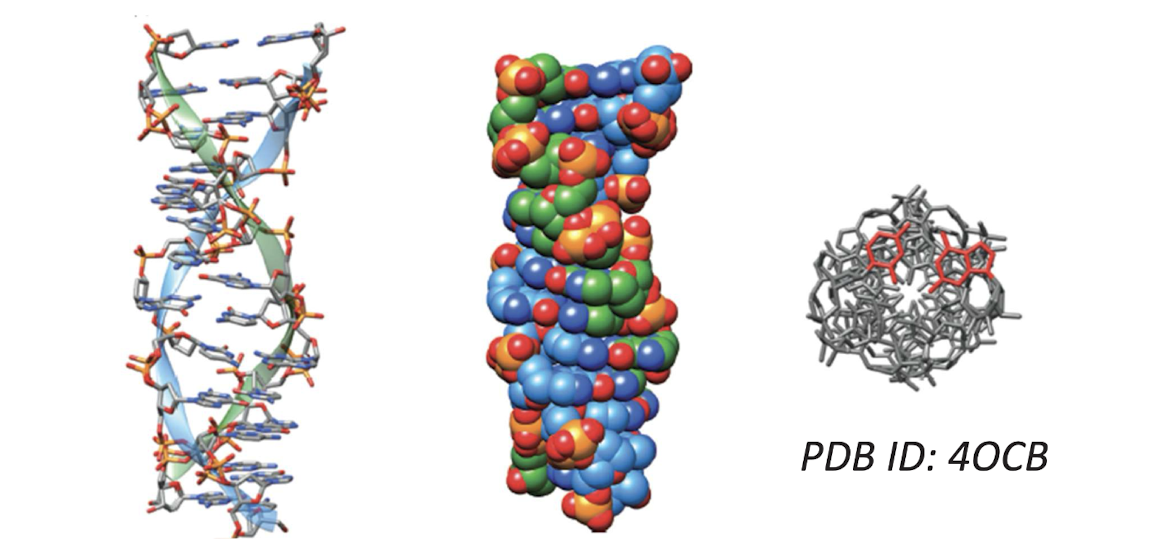
Circular Duplex DNAs: no supercoiling to tightly supercoiled
DNA secondary structure is highly regular (mainly B-form).
Main tertiary structures in DNA are overwound and underwound helices: supercoiling
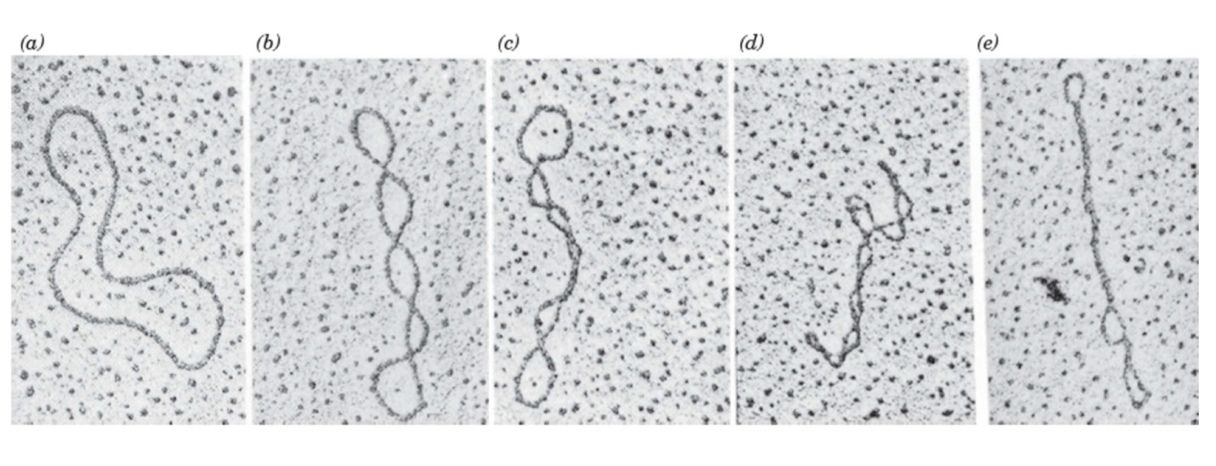
Type 1A Topoisomerase Action
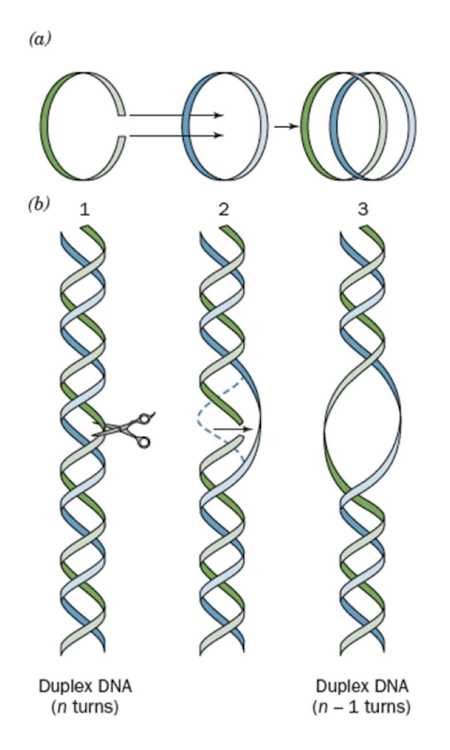
Proposed Mechanism for Type 1A Topoisomerases
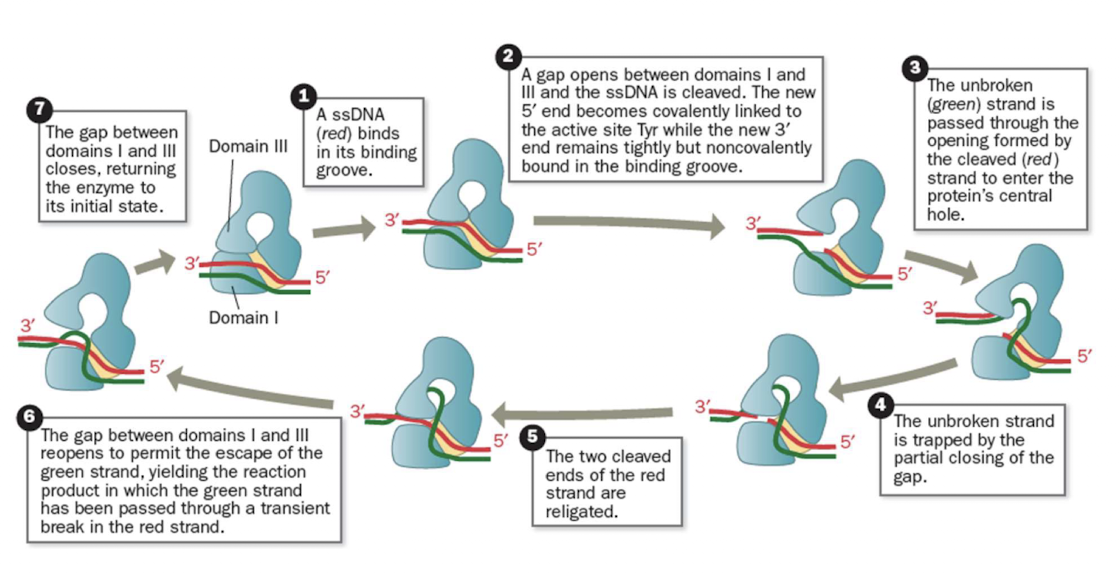
Model for the Enzymatic Mechanism of Type II Topoisomerases
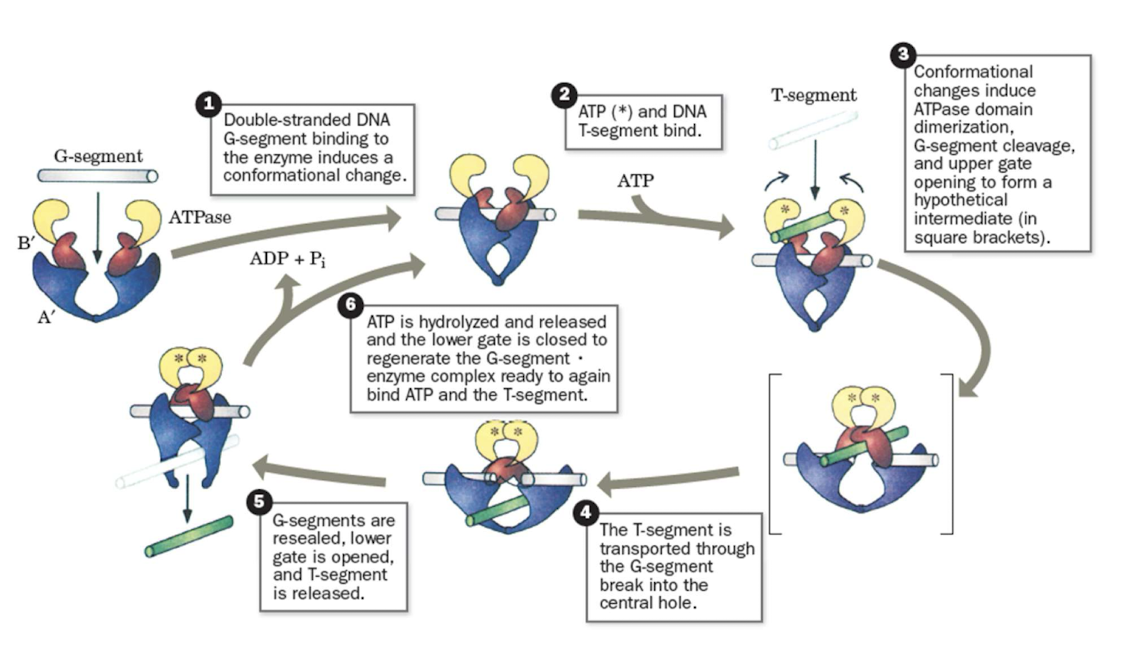
Checkpoint 6.2: Nucleic Acid Structure: DNA
What is the structural basis for Chargaff’s rules?
Using a three-dimensional computer model of the DNA molecule, identify each of the following structural features: the 3’ and 5’ end of each strand, the atoms that make up the sugar-phosphate backbone, the major and minor grooves, the bases in several base pairs, and the atome that participate in hydrogen bonding in A/T and G/C base pairs.
What are the structural differences between DNA and RNA?
What are the structural differences (in handedness, diameter, and presence of grooves) among A-, B-, and Z- DNA?
IN what nucleic acid condormatino(s) does the ribose pucker with C2’ endo? C3’ endo?
Why do most nueclotides adopt the anti conformation?
How does under- or overwinding of DNA helices produce supercoils?
Why is it necessary for DNA molecules to be circular or anchored to proteins to maintain supercoiling?
How do type 1A, type 1B, and type II topoisomerases alter DNA topology? Which processes require the input of free energy?
Learning Outcomes: 6.2
Describe the formation of diverse secondary and tertiary structures by RNA molecules.
Recall that RNA assumes more varied shapes than DNA
Describe how basic secondary structure elements such as double helices can arise out of single stranded RNA sequences
Classify the chemical forces that contribute to the tertiary structure of RNA
Explain the catalytic activity of RNA and the concept of the RNA world
Key Concepts 6.3: Nucleic Acid Structure: RNA
Single-stranded nucleic acids, such as RNA, can adopt stem-loop strucutres
Larger RNAs such as tRNA and rRNA can fold into highly complex structures using a variety of hydrogen bonding and stacking interactions
Some RNAs can catalyze biochemical reactions.
RNA Stem-Loop Structure
Stem-loop (hairpin) structure allows formation of double helix from single strand
bases in loop are stacked on end of helix
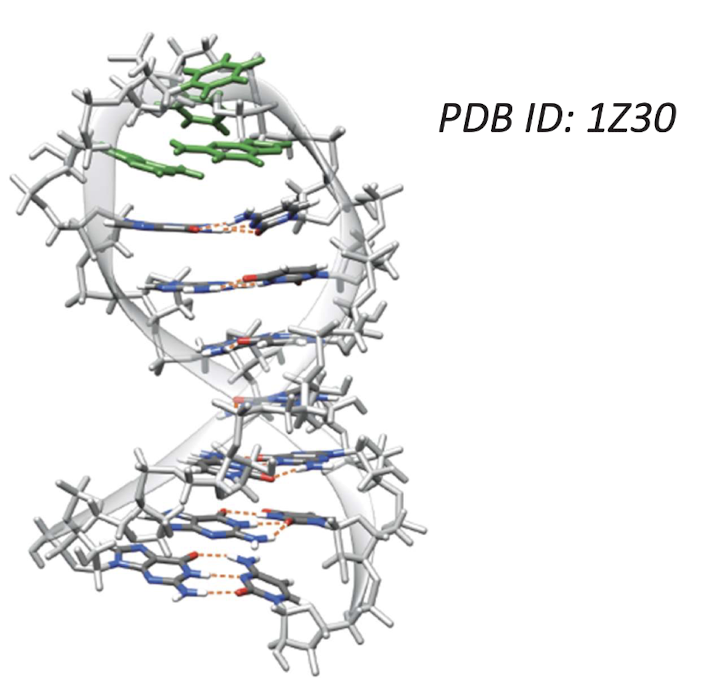
Yeast tRNAPhe
tRNAs (transfer RNAs) are approx. 75-bp
Secondary structure is “cloverleaf”
3D structure in shape of a comma
Contains helical stem-loops that fold into compact structure.
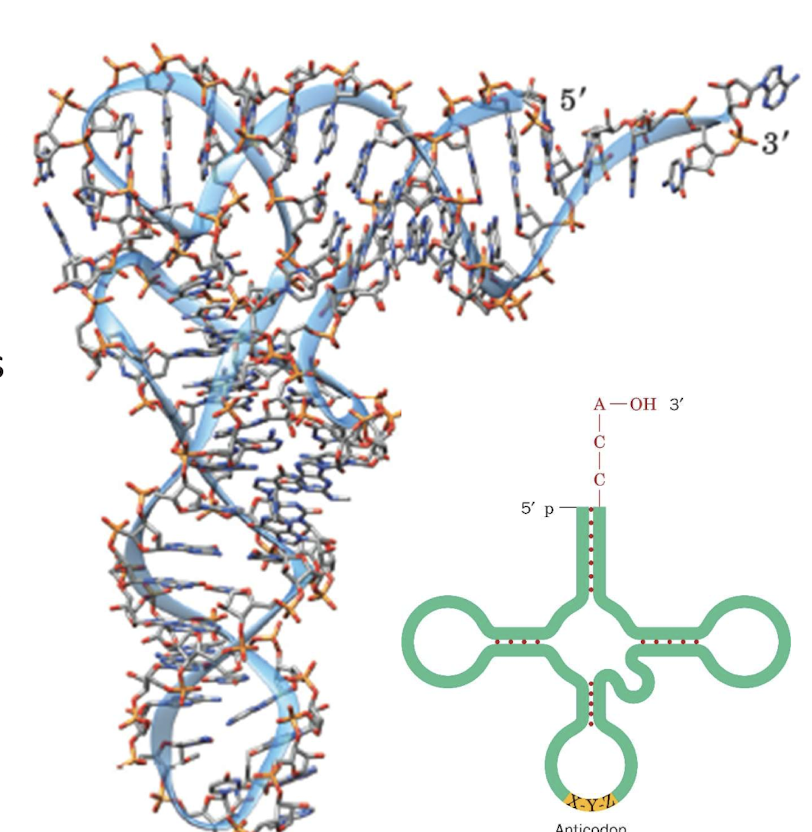
rRNAs: Helical Segment Folded into Larger Globular Strucutres
Larger rRNAs (ribosomal RNAs) form more elaborate structures that will aggregate into quaternary structures
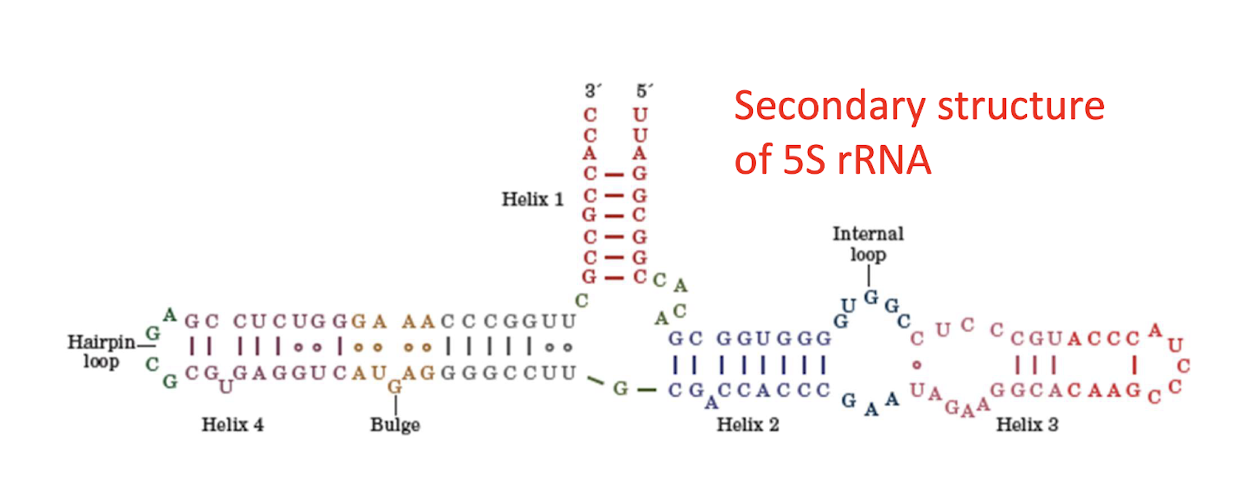
RNAs Can be Catalysts
rRNAs catalyzes peptide bond formation (transfer of amino acid from tRNA to growing polypeptide).
Hammerhead Ribozyme
Small “ribozyme” (40 nt)
Catalyzes hydrolysis of phosphodiester linkage
Major evidence for RNA world stage of life on Earth
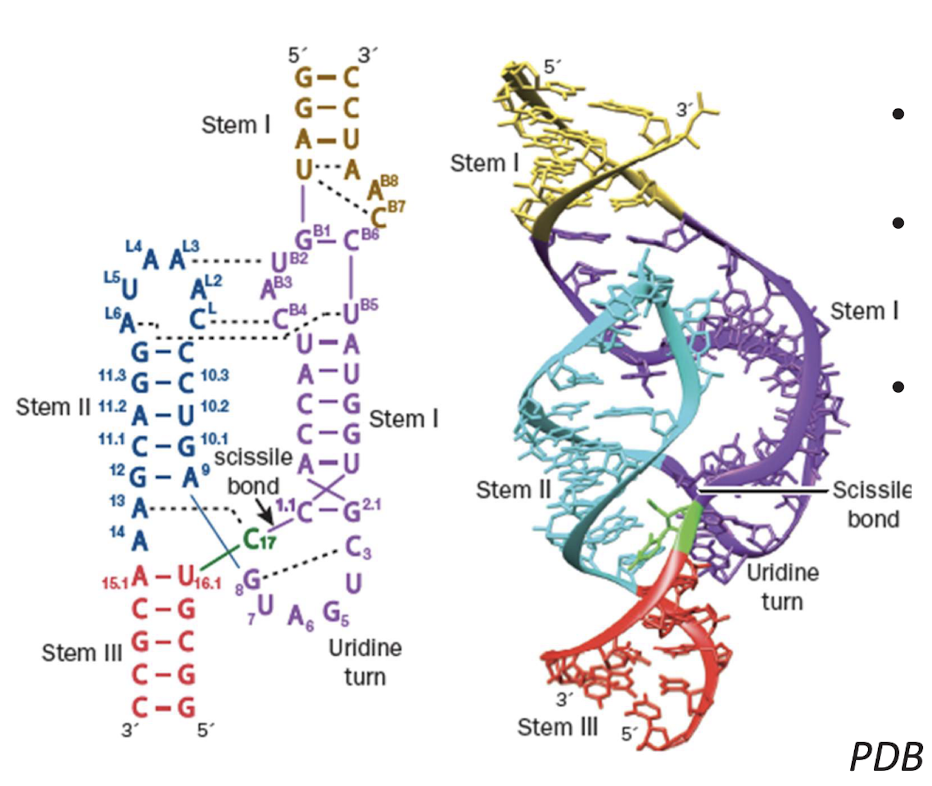
Checkpoint 6.3: Nucleic Acid structure: RNA
What forces stabilize nucleic acid structure? Which is most important?
What are the molecular events of nucleic acid denaturation and renaturatino?
What properties allow RNA molecules to act as catalysts?
Learning Outcomes: 6.4
Explain how biological information is stored and converted into functional molecules
Describe the format in which DNA carries genetic information
Explain the roles of DNA, RNA, and protein in the flow of biological information
Key Concepts 6.4: Overview of Nucleic Acid Function
DNA carries genetic information in its sequence of nucleotides
When DNA is replicated by DNA polymerase, each strand acts as a template for the synthesis of a complementary strand
According to the central dogma of molecular biology, one strand of the DNA of a gene is transcribed into mRNA. The mRNA is then translated into protein by the ordered addition of amino acids boud to tRNA molecules that base-pair with the mRNA at the robosome.
Central Dogma
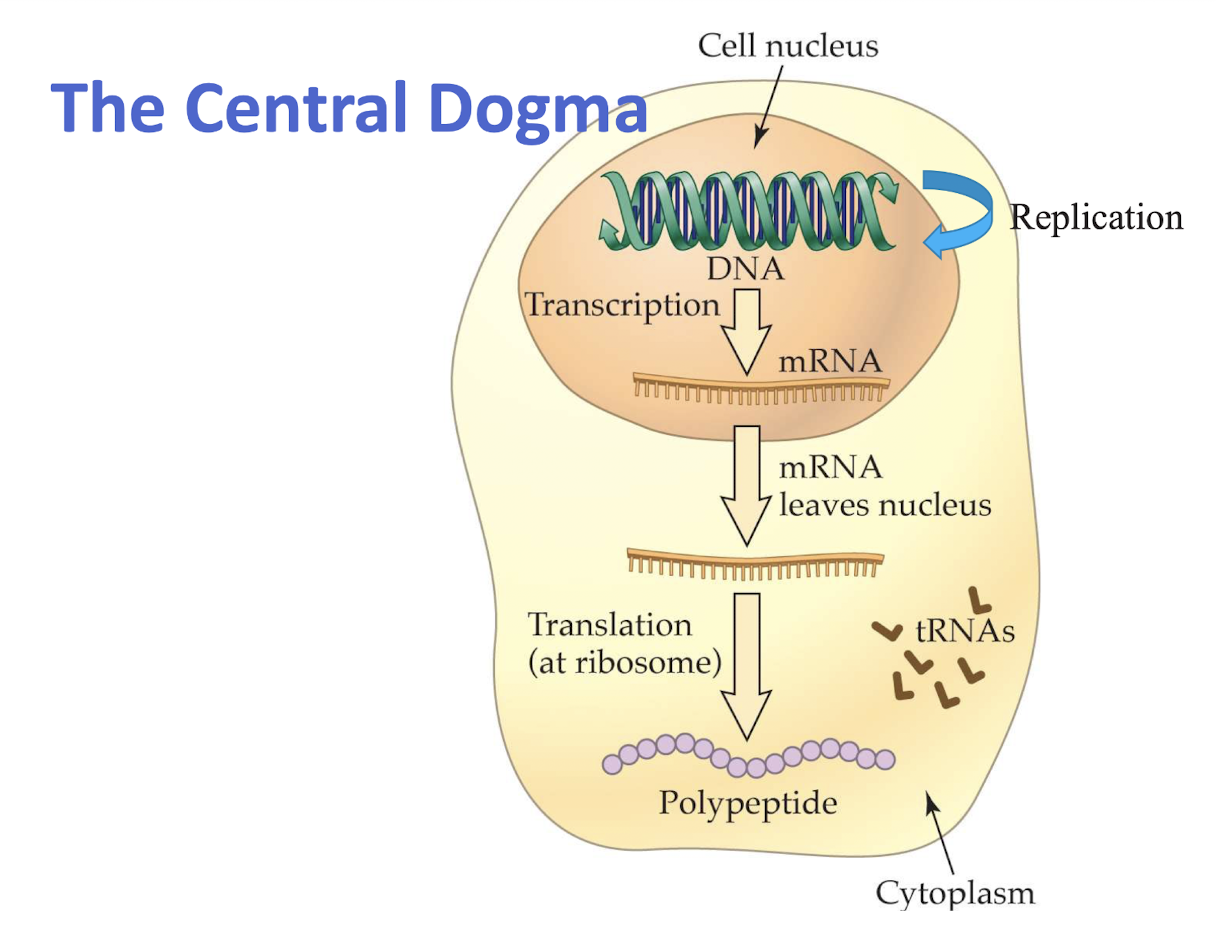
Semiconservative DNA Replication
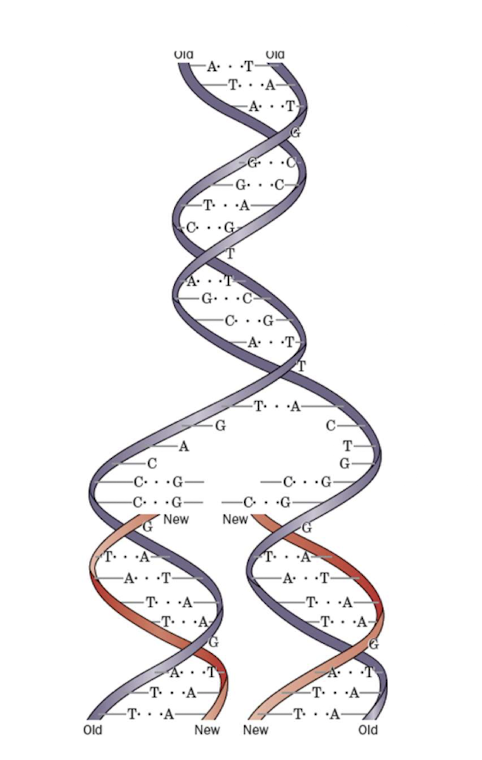
Transcription and translation
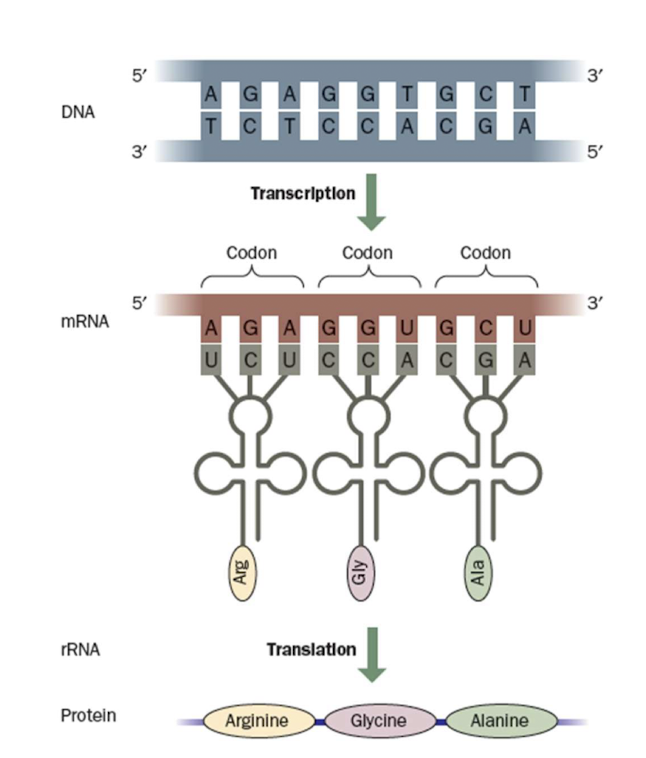
Checkpoint 6.4: Overview of Nucleic Acid Function
Why is the double-stranded nature of DNA relevant for copying and transmitting genetic information when a cell divides?
What are the steps of the central dogma? What roles does RNA play in each step?